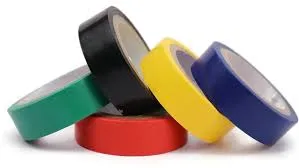Exploring Butyl Rubber Roofing A Durable Solution for Modern Structures
Butyl rubber roofing is rapidly gaining traction as a preferred choice for many structural applications, particularly in commercial and industrial settings. Known for its exceptional durability and weather resistance, butyl rubber provides an innovative solution to common issues faced in roofing systems.
Butyl rubber is a synthetic rubber that boasts excellent impermeability to water and air, making it a suitable material for roofing membranes. It is primarily manufactured from isobutylene, a type of hydrocarbon. This unique composition endows butyl rubber with outstanding properties, including high flexibility, resilience, and longevity. When installed correctly, butyl rubber roofing can last upwards of 20 years, significantly outpacing traditional roofing materials like asphalt or felt.
One of the standout features of butyl rubber roofing is its ability to endure extreme weather conditions. It performs admirably in both hot and cold temperatures, maintaining its integrity even when subjected to UV radiation. This quality makes it ideal for regions with harsh climates, where other materials might crack, warp, or degrade. Additionally, butyl rubber's chemical resistance allows it to withstand exposure to various substances, including oils and solvents, making it suitable for industrial facilities.
butyl rubber roofing

The installation process of butyl rubber roofing is relatively straightforward. The membranes come in large rolls, which can be mechanically fastened, adhered, or ballasted to the roofing substrate. This versatility in application methods enhances its appeal to contractors and property owners alike. Furthermore, the seamless nature of butyl rubber roofing reduces the risk of leaks, as the material can be welded or adhered at seams, creating a continuous barrier against water infiltration.
Sustainability is another advantage of butyl rubber roofing. The material is often made from recycled sources and can contribute to energy efficiency due to its reflective properties. Some types of butyl rubber membranes are designed to reflect UV rays, helping to reduce building cooling costs. This makes butyl rubber roofing an environmentally friendly option for those looking to minimize their ecological footprint.
Moreover, maintenance requirements for butyl rubber roofing are minimal. Regular inspections can help identify any potential issues, but the material's durability often means that significant repairs are infrequent. This low-maintenance aspect is especially appealing to commercial property owners, who may not have the time or resources for regular upkeep.
In conclusion, butyl rubber roofing is a highly effective and reliable choice for anyone seeking a long-lasting roofing solution. Its durability, weather resistance, ease of installation, and minimal maintenance make it an attractive option for both commercial and industrial applications. As building practices evolve, the demand for innovative materials like butyl rubber will only continue to grow, reaffirming its place in modern roofing technology. Whether for a new construction project or a roof replacement, butyl rubber roofing stands out as a smart investment for the future.
-
XIANGFAN Rubber Tape-Ultimate Solutions for All Your Insulation NeedsNewsJun.24,2025
-
XIANGFAN Rubber Tape-Protection for Industrial and Residential ApplicationsNewsJun.24,2025
-
XIANGFAN Rubber Tape: Superior Safety and Sealing for Demanding EnvironmentsNewsJun.24,2025
-
XIANGFAN Rubber Tape: Reliable Solutions for Every Electrical ChallengeNewsJun.24,2025
-
XIANGFAN Electrical & Industrial Tape: Powering Reliability Across IndustriesNewsJun.24,2025
-
XIANGFAN Electrical & Industrial Tape: Excellence in Every ApplicationNewsJun.24,2025
